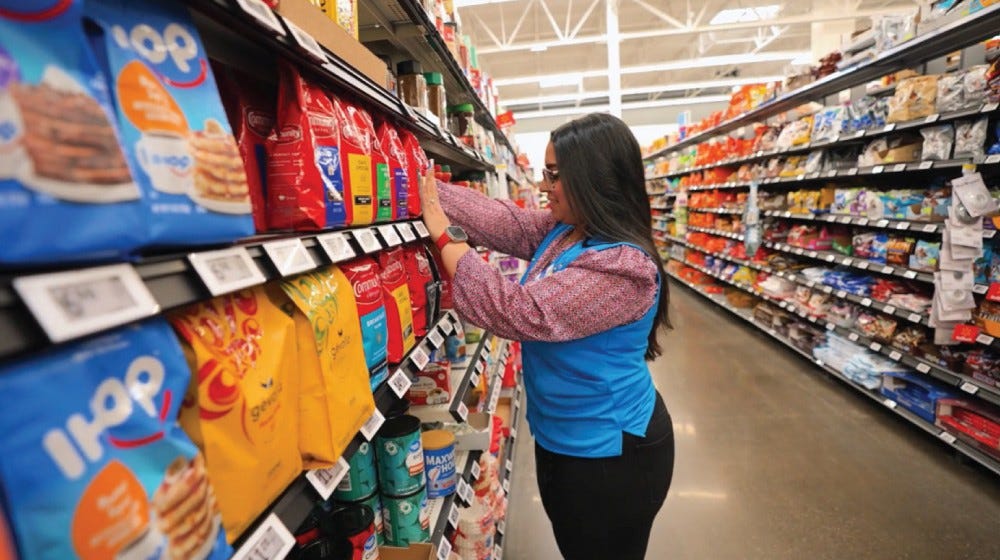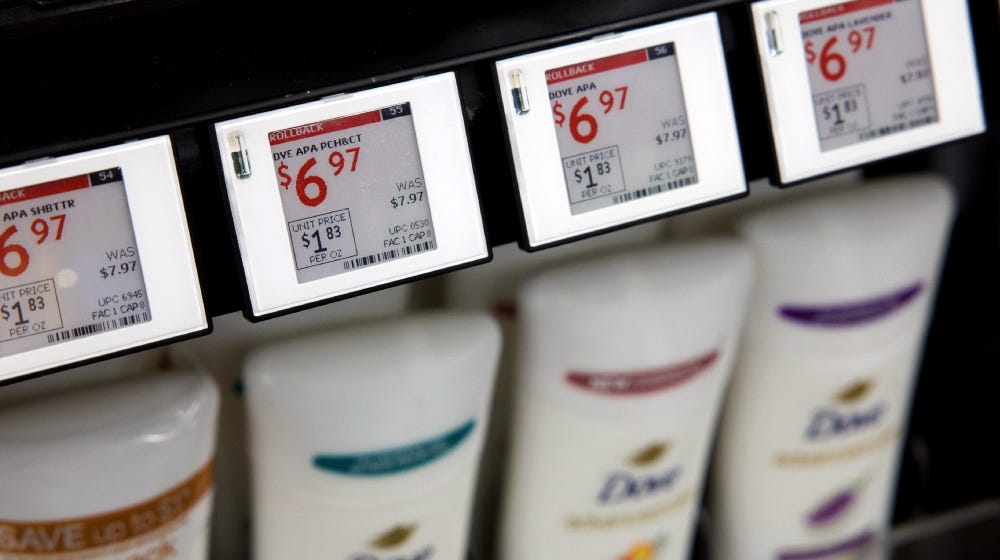Retail Revolution: Walmart Adopts Electronic Shelf Labels
Walmart is joining the ranks of retailers adopting electronic shelf labels, following a successful pilot program, that enables price updates as frequently as every ten seconds. Walmart's successful pilot of digital shelf labels in Texas has paved the way for a broader rollout to 2,300 stores by 2026. The technology streamlines price changes, inventory tracking, and order fulfillment, offering clear advantages for the retailer.
Trend in Retail The concept of surge pricing, familiar in apps like Uber, is gradually entering retail. Wendy's has recently sparked controversy with its consideration of this model. Electronic shelf labels facilitate such strategies, but Walmart has not explicitly linked this technology to dynamic pricing. Instead, the retailer emphasizes increased productivity and efficiency, with Daniela Boscan from Walmart noting improvements in restocking and reduced employee walking time.
Adoption Across the Industry Walmart isn't pioneering this change alone. Whole Foods, Amazon Fresh, and Schnucks have already integrated electronic shelf labels. This trend is more prevalent in European stores, indicating a broader acceptance and implementation.
Beyond Pricing Electronic shelf labels offer more than just pricing updates. They provide detailed product information via barcodes, enhancing customer experience by sharing details about sourcing, dietary compatibility, and more, as noted by Lempert.
Labor and Cost Efficiency With rising labor costs, digitized shelf labels promise significant benefits for retailers, from giants like Walmart to smaller chains. Price changing exercises are extreme burden to retailers and industry experts point out the labor savings and productivity boosts these labels offer.
Consumer Concerns and Dynamic Pricing While the potential for dynamic pricing exists, companies like Walmart are unlikely to exploit this technology for sudden price hikes due to the risk of customer dissatisfaction. Instead, these labels aim to synchronize in-store and online prices, ensuring consistency and reducing customer confusion.
Inflation and Budgeting Woes As inflation pressures persist, consumers are wary of dynamic pricing models, fearing unmanageable budget fluctuations. However, some experts argue that dynamic pricing could offer advantages, such as lower prices during off-peak times.
Public Perception of Dynamic Pricing Despite its potential benefits, dynamic pricing remains controversial. A YouGov survey reveals significant consumer opposition to dynamic pricing in sectors like entertainment and transportation, indicating a broader resistance to this model in new settings like grocery stores.
The Future of Shopping While dynamic pricing may be on the horizon for some retailers, its success depends on clear communication and managing consumer expectations. Amidst ongoing inflation, retailers must balance profit goals with maintaining customer trust and satisfaction.
My Final Thoughts It is not shocking to think customers are wary of dynamic pricing, especially in a model that can account for real-time events and adjust accordingly. However, it is easy to focus on the negatives rather than the positives. I believe this gives Walmart and even higher advantage to remain the value-cost option to price weary consumers. Retailers are leveraging and investing in AI to create flexibility in their business model and create a more personalized retail experience, so it feels logical that AI will be used to improve pricing guidance. While the adoption cycle will be long, I see other retailers moving in this similar direction and reinvesting those store associates hours back into customer experience.




